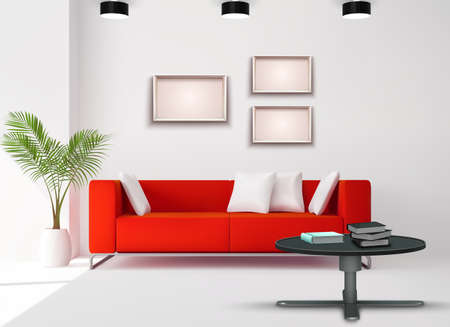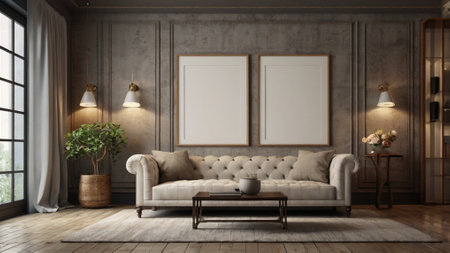Introduction to Edwardian Elegance
Step into the world of Edwardian elegance, where subtle sophistication and refined taste come together to create interiors that are both timeless and distinctly British. The Edwardian era, spanning from 1901 to 1910, is renowned for its graceful move away from the darker, heavier Victorian aesthetic towards lighter, airier spaces filled with understated charm. At its core, Edwardian décor celebrates simplicity—think delicate lines, elegant woodwork, and a harmonious blend of comfort and style. In contemporary British homes, incorporating elements of this era can infuse your living spaces with a sense of history while maintaining a fresh and uncluttered feel. Whether you live in a classic London townhouse or a modern flat, embracing Edwardian influences allows you to curate interiors that balance practicality with an inviting sense of everyday luxury. Let’s delve into how you can bring this unique blend of tradition and modernity into your own home through thoughtful furniture choices and styling tips.
Key Characteristics of Edwardian Furniture
Edwardian furniture, a hallmark of early 20th-century Britain, is celebrated for its fresh approach to design after the heavier Victorian era. This period’s craftsmanship blends function with refined elegance, making it perfect for those looking to infuse their home with a touch of lightness and sophistication. Below, we identify the key features that set Edwardian pieces apart—ideal for both collectors and anyone eager to channel timeless British charm in their interiors.
Signature Materials
| Material | Description |
|---|---|
| Mahogany | The go-to wood for its rich hue and fine grain, often seen in cabinets and dining tables. |
| Satinwood | Lighter and more delicate, satinwood was favoured for inlays and accent pieces, lending an airy feel. |
| Bamboo & Wicker | Popular in conservatories and sunrooms, these materials introduced a casual yet stylish note. |
| Upholstery Fabrics | Floral prints, damasks, and soft pastels were typical choices, echoing the era’s focus on comfort and visual delight. |
Shapes & Silhouettes
- Graceful Curves: Unlike the rigid lines of previous styles, Edwardian furniture boasts gently curved arms and cabriole legs.
- Slimmer Profiles: Pieces are notably lighter and less bulky, ideal for modern British homes where space efficiency matters.
- Tapered Legs: A nod to Neoclassical influence, offering both visual lift and practical stability.
Decorative Details Inspired by Early 20th-Century Britain
- Inlay Work: Contrasting woods or mother-of-pearl were commonly used to add subtle decorative interest without overwhelming the piece.
- Simplified Ornamentation: Carvings became less fussy; motifs like garlands, ribbons, or laurel wreaths appeared as tasteful embellishments rather than dominant features.
- Cane Backs & Seats: Especially in occasional chairs, cane work brought texture and a hint of informality suited to the lighter Edwardian taste.
- Pale Colour Palette: Whites, creams, and soft greens dominated painted finishes, brightening rooms and reflecting natural light—a must-have for classic British interiors striving for warmth despite grey skies.
Summary Table: Hallmark Features at a Glance
| Feature Type | Edwardian Signature Element |
|---|---|
| Material | Mahogany, satinwood, bamboo, wicker, floral upholstery fabrics |
| Shape/Silhouette | Curved arms & legs, slimmer frames, tapered supports |
| Detailing | Simplified carvings, inlay work, pale colours, cane accents |
Whether you’re curating a single statement chair or a whole room scheme, understanding these quintessential Edwardian characteristics will help you choose authentic pieces or inspired reproductions that breathe understated British elegance into your home.

3. Selecting Statement Edwardian Pieces
When curating a space with Edwardian elegance in mind, the selection of statement furniture is crucial to achieving that delicate balance between period charm and modern functionality. Whether you are sourcing authentic antiques or opting for high-quality reproductions, here are some practical tips to help you make the right choices for your contemporary British home.
Understand the Hallmarks of Edwardian Design
Edwardian furniture is renowned for its lighter, more refined look compared to the heavier Victorian style. Look for slender legs, subtle curves, and inlaid wood details. Mahogany, satinwood, and walnut were popular materials, often finished with understated embellishments such as marquetry or elegant carvings. These features help create a sense of airiness and sophistication, perfect for modern living spaces.
Prioritise Function Without Compromising Style
While Edwardian pieces are beautiful, practicality should not be overlooked. Opt for items like display cabinets with glass doors for both storage and showcasing treasures, or occasional tables that can double as coffee tables or side tables in your lounge. Look for chairs with supportive backs and comfortable seats—perfect for today’s family gatherings or a quiet cuppa in the afternoon.
Tip: Seek Out Versatile Pieces
A writing desk with slim drawers can serve as a stylish console table in your hallway or a compact home office solution. Similarly, an Edwardian sideboard offers ample storage while acting as a striking focal point in your dining area.
Mix Authenticity with Practicality
If budget allows, investing in genuine Edwardian antiques brings authenticity and lasting value to your interiors. However, well-crafted reproductions can offer the same timeless appeal at a fraction of the cost and often come with added durability. When buying reproductions, choose reputable British makers who respect traditional joinery techniques and use quality materials to ensure your furniture stands the test of time.
Tip: Blend Old and New Thoughtfully
Don’t be afraid to pair an ornate Edwardian chair with a contemporary sofa or place an antique chest at the foot of a modern bed. This fusion keeps your home feeling fresh and liveable while celebrating classic British heritage.
4. Colour Palettes and Soft Furnishings
Bringing Edwardian elegance into your home is not just about the furniture—it’s also about the colours and textures you choose to surround yourself with. The Edwardian period favoured a gentle, airy approach to interiors, moving away from the heavy, dark shades of previous eras in favour of lighter, more uplifting hues. To achieve this look in a contemporary British home, focus on muted pastels, delicate botanical prints, and tactile fabrics that offer both comfort and sophistication.
Edwardian-Inspired Colour Schemes
Selecting the right palette is key to capturing the era’s understated charm. Think powdery blues, soft sage greens, blush pinks, and creamy ivories. These colours pair beautifully with natural light and create a sense of calm sophistication that feels both classic and current.
Colour |
Effect |
How to Use |
|---|---|---|
| Powder Blue | Calming & Refined | Walls or accent pieces such as vases and lamps |
| Sage Green | Fresh & Natural | Upholstery, soft throws, or painted woodwork |
| Blush Pink | Warm & Inviting | Cushions, curtains, or bedding for a subtle touch |
| Creamy Ivory | Light & Airy | Main wall colour or as a base for layering textiles |
Textiles: Fabrics That Tell a Story
The Edwardians adored tactile materials—think crisp linens, soft velvets, and delicately embroidered cottons. Botanical prints were particularly fashionable, bringing the beauty of nature indoors while adding subtle pattern and interest. Incorporate cushions with fern or wildflower motifs, drape windows with floaty voile curtains, or add a fringed throw to your favourite reading chair. These touches layer texture and visual appeal without overwhelming the space.
Styling Tip:
Mingle different textures within your palette to create depth: try pairing velvet cushions with linen upholstery or adding an embroidered table runner atop a polished wooden sideboard. This mix keeps the look fresh and inviting while still rooted in period authenticity.
5. Styling Tips for Modern British Homes
Blending Edwardian elegance with contemporary British living isn’t just about mixing old and new—it’s about creating a home that feels both refined and comfortably lived-in. Start by choosing one or two statement Edwardian pieces, such as a curved sideboard or an inlaid writing desk, to anchor your space. Pair these with understated modern furnishings in muted tones to let the antiques shine without overwhelming the room.
Effective room layouts are key. Position your Edwardian furniture so it becomes a functional part of daily life—an elegant armchair by a reading nook, or a mahogany console in the hallway for keys and post. Keep pathways clear and use symmetrical arrangements where possible, drawing from traditional British sensibilities while ensuring movement flows easily.
Storage is essential for maintaining that signature tidy-yet-homely feel. Look for period-inspired storage solutions, like glass-fronted cabinets for books and curios, or repurpose Edwardian chests as coffee tables with hidden storage. For everyday clutter, woven baskets and understated ottomans blend seamlessly with both eras, keeping spaces organised without sacrificing style.
Finally, layer in personal touches that reflect modern British life—think locally-made cushions in heritage fabrics, or framed prints of favourite countryside spots. This approach ensures your home remains practical and welcoming, reflecting the best of both Edwardian elegance and contemporary comfort.
6. Accessorising with British Flair
To truly capture the spirit of Edwardian elegance in your home, it’s essential to finish your space with authentic British accessories and decorative touches. Start by seeking out period lighting—think ornate brass table lamps, delicate wall sconces, or intricate glass pendant lights that softly illuminate your rooms and evoke early 20th-century sophistication. These classic fixtures are not only functional but also act as statement pieces that ground your décor firmly within the Edwardian era.
Ceramics hold a special place in British interiors, particularly those adorned with floral motifs or intricate patterns reminiscent of Edwardian artistry. Displaying fine bone china teacups, vases, or even decorative plates on open shelving or mantelpieces instantly injects a sense of heritage and refined taste into your living spaces. Don’t be afraid to mix vintage finds from local antique markets with contemporary ceramics for a fresh take on tradition.
Glassware is another subtle nod to Edwardian style, especially when you incorporate etched crystal decanters, cut-glass bowls, or coloured glass trinkets. These items add sparkle and visual interest without overwhelming the room. For a touch of unmistakable British character, look for pieces from renowned UK makers or regional artisans who continue classic methods.
Textiles and soft furnishings can further enhance the mood—think embroidered cushions, fringed throws in muted hues, or even a woollen tartan blanket draped over an armchair. The key is layering textures and patterns thoughtfully for comfort and understated luxury.
Remember, accessorising Edwardian style isn’t about excess but about selecting meaningful pieces that tell a story of British heritage and everyday elegance. By curating a collection of signature accessories—whether it’s a well-chosen lamp, a cherished piece of pottery, or heirloom-quality glassware—you’ll complete the look with a genuine British flair that feels both timeless and personal.


